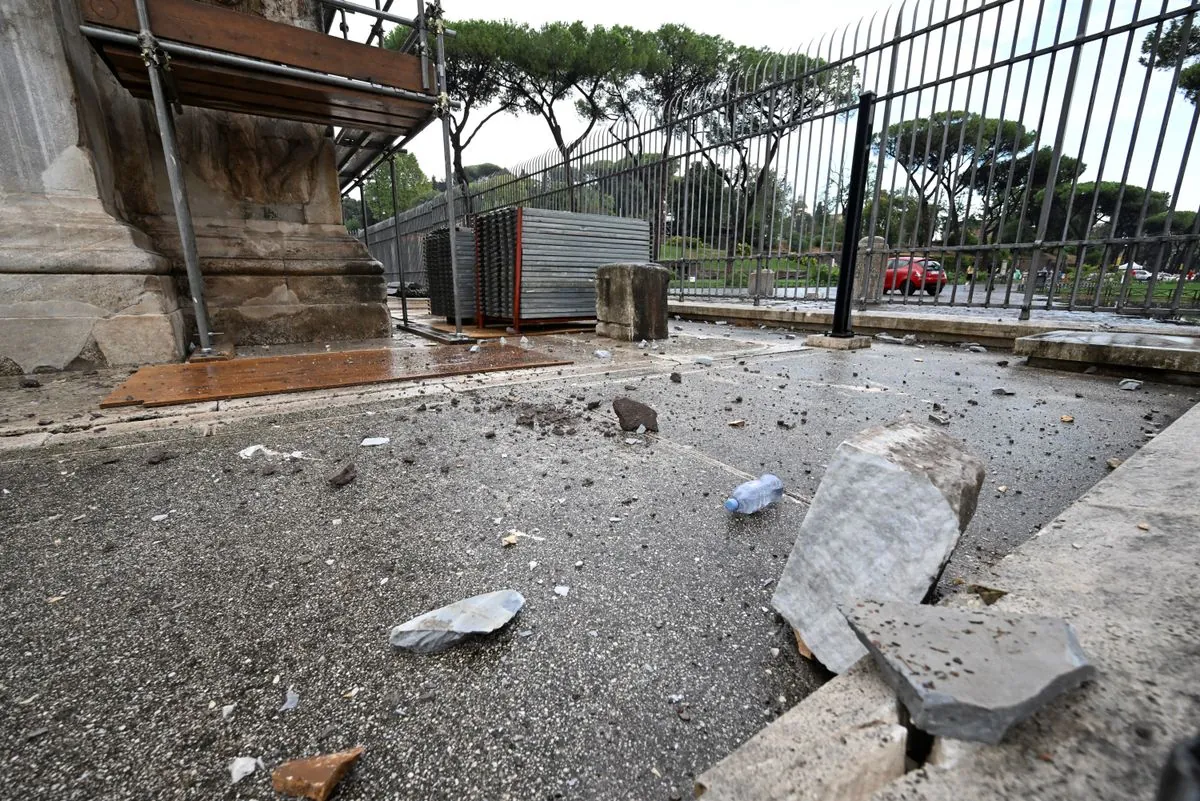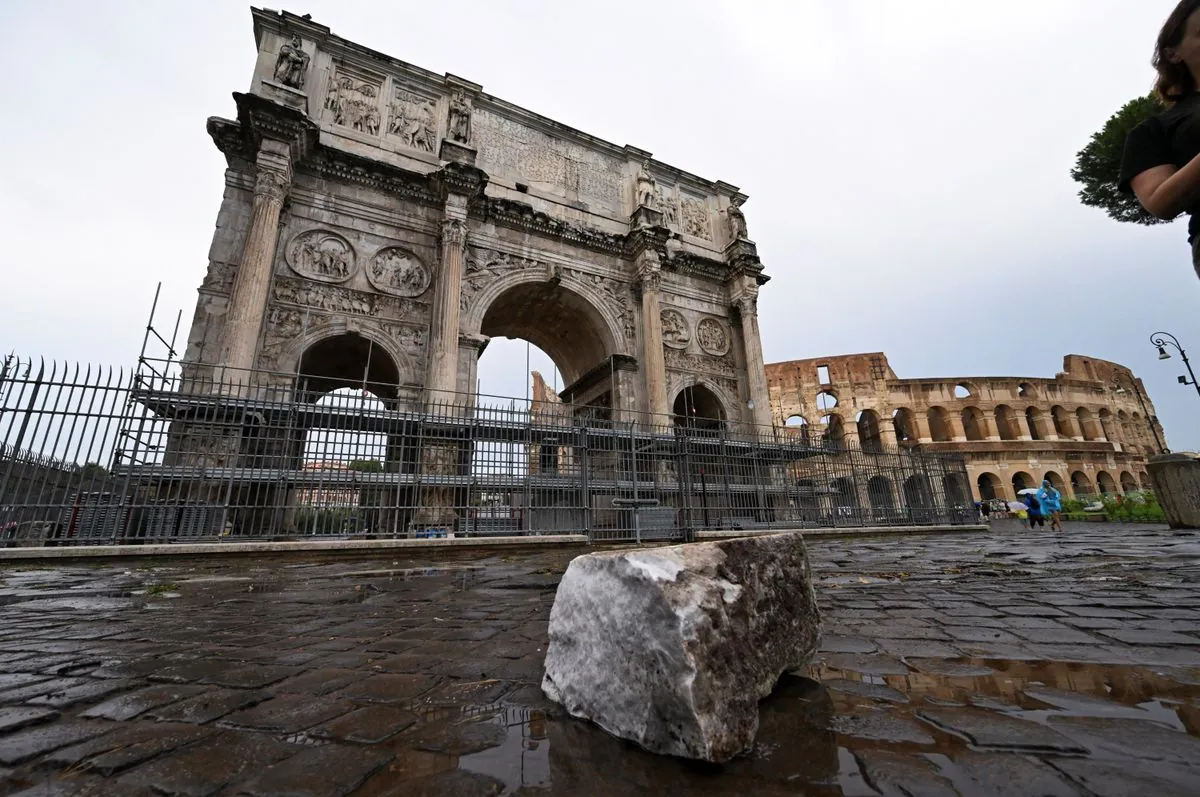Ancient Roman Arch Struck by Lightning in Severe Rome Storm
The Arch of Constantine in Rome suffered damage from a lightning strike during an intense storm. The 4th-century monument, located near the Colosseum, saw stone blocks dislodged in the incident.

On September 3, 2023, a violent storm struck Rome, causing significant damage to one of the city's most iconic ancient monuments. The Arch of Constantine, a colossal structure standing approximately 21 meters tall, was hit by lightning, resulting in the dislodgement of several stone blocks.
The Arch of Constantine, dedicated in 315 AD, holds a prominent place in Roman history. It was commissioned by the Roman Senate to commemorate Constantine I's victory over Maxentius at the Battle of Milvian Bridge in 312 AD. This battle was a pivotal moment in Constantine's conversion to Christianity, making him the first Roman emperor to embrace the faith.
An eyewitness account described the incident:
"A lightning strike hit the arch right here and then hit the corner and we saw this fly off"
The tourist pointed to a substantial stone block that had fallen to the ground. Video footage revealed additional stone fragments and debris scattered around the monument's base.
Staff from the Colosseum Archaeological Park were observed collecting the fallen pieces. The park, which includes both the Arch of Constantine and the nearby Colosseum, typically welcomes millions of visitors annually. The Colosseum itself, constructed in the 1st century AD, stands as another testament to Rome's rich historical legacy.
The storm's impact extended beyond the ancient monument. Rome experienced widespread disruption, with trees and branches felled across the city and numerous streets flooded. The Civil Protection agency reported that central Rome received 60 millimeters of rainfall in less than an hour—equivalent to the typical precipitation for an entire autumn month.
This incident highlights the vulnerability of ancient structures to extreme weather events. While many historical monuments are equipped with lightning rods for protection, the effectiveness of such measures can be challenged by unusually severe storms.

The Arch of Constantine, the largest triumphal arch in Rome, measures 25.7 meters in width and 7.4 meters in depth. Its grand scale and intricate decorations, many of which were repurposed from earlier monuments—a practice known as "spolia"—have made it a model for numerous modern triumphal arches worldwide, including the famous Arc de Triomphe in Paris.
As Rome, a city founded in 753 BC according to legend, grapples with the aftermath of this storm, the incident serves as a reminder of the ongoing challenges in preserving ancient heritage in the face of unpredictable natural phenomena. The city's Mediterranean climate, characterized by hot, dry summers and mild, wet winters, occasionally produces such intense weather events, posing risks to its wealth of historical treasures.


































